Struggling with Depth? How to Improve Ankle Mobility for Squats
In this article, we will explore effective strategies on how to improve ankle mobility for squats, providing you with the tools and exercises needed to enhance your performance, prevent injuries, and achieve your fitness goals.
We all want to hit that perfect squat – you know, the one that makes us feel like we could lift the whole gym. If only our ankles weren’t so… tiny. But really, it’s not about the size of your ankles (lucky for us), it’s about how well they move. Poor ankle mobility is one of the main reasons squatting feels like trying to sit in a tiny chair that’s just out of reach. Sound familiar? It turns out that learning how to improve ankle mobility for squats can be a real game-changer.
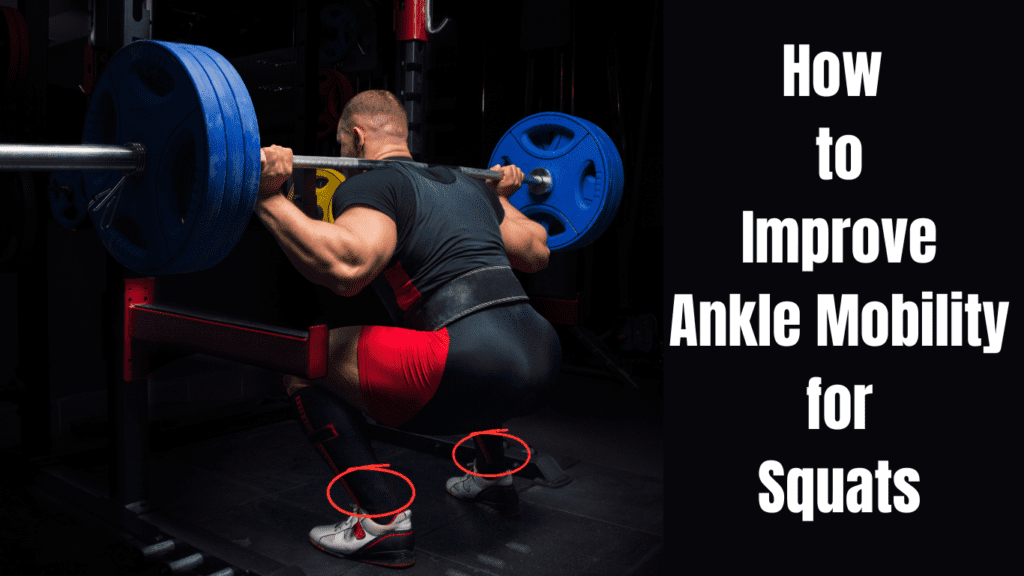
Jokes aside, having good ankle mobility is critical for almost everything we do in fitness, especially when it comes to squats. When your ankles don’t have the range of motion they need, it throws everything off. Your heels might lift up, your knees could cave in, or you might find yourself tipping forward. These issues not only mess with your squat form but also put extra strain on other parts of your body. That’s why figuring out how to improve ankle mobility for squats is so important – it helps you squat deeper, lift heavier, and move better overall, all while reducing the risk of injury.
You see, squats aren’t just about strong legs or a stable core. They demand flexibility and range of motion in your ankles as well. If your ankles are stiff, they won’t allow your body to move through the full range that a squat requires. This can cause compensations elsewhere in your body, like your knees or lower back, which could lead to discomfort or even injury. By learning how to improve ankle mobility for squats, you set yourself up for better form, deeper squats, and, ultimately, more strength gains.
Subscribe And Get Our Free E-Book:Unlocking The Power Of Nutrition-Supplements, Substitutes, and Superfoods!
So, how can improving your ankle mobility make such a difference? Well, when your ankles move well, everything else follows. You’ll find it easier to keep your heels on the ground, your knees will track better, and your balance will improve. Essentially, improving ankle mobility for squats makes the movement feel smoother and more natural. Plus, it allows you to get deeper into your squat, which is key for maximizing strength and muscle engagement.
In this article, we’ll dive into how to improve ankle mobility for squats by exploring a few simple strategies and exercises that can unlock better movement. We’re not talking about drastic changes or spending hours on mobility work every day. Just adding a few targeted stretches and movements to your routine can go a long way toward improving your squats. Whether you’re struggling to get depth, having trouble keeping your balance, or dealing with discomfort, focusing on ankle mobility can help you overcome these issues.
As you read on, you’ll find out just why ankle mobility is such an essential part of a strong, healthy squat, and you’ll get the tips you need to start seeing improvements. With the right approach, you’ll be able to squat deeper, lift heavier, and do it all with better form – and who wouldn’t want that?
The Secrets Of Deep Squats: Unlock Your Tibia And Ankle Mobility Video
Understanding Ankle Mobility
When we talk about ankle mobility, we’re referring to the ability of the ankle joint to move through its full range of motion. This movement is essential for a variety of everyday activities, and especially when it comes to exercises like squats. To squat properly, your ankles need to be flexible enough to allow your knees to move forward without your heels lifting off the ground. If your ankle mobility is limited, your squat form suffers. So, if you’ve ever wondered how to improve ankle mobility for squats, you’re definitely not alone.
Anatomy of the Ankle
To better understand how to improve ankle mobility for squats, it helps to know a bit about the anatomy of the ankle. The ankle is a complex joint made up of several key structures:
- Bones: The main bones involved are the tibia (shinbone), fibula, and talus. These form the hinge joint that allows for up-and-down movement.
- Ligaments: Ligaments are like the ropes that hold the bones together, providing stability. They prevent too much side-to-side movement and ensure the joint stays in place.
- Muscles: Surrounding the ankle, muscles like the gastrocnemius and soleus (the calf muscles) play a major role in allowing the joint to move. These muscles help you push off the ground and control movement as you lower into a squat.
When you’re thinking about how to improve ankle mobility for squats, it’s important to realize that all these elements work together. Tightness in the muscles or stiffness in the joint can limit the movement needed for a proper squat.
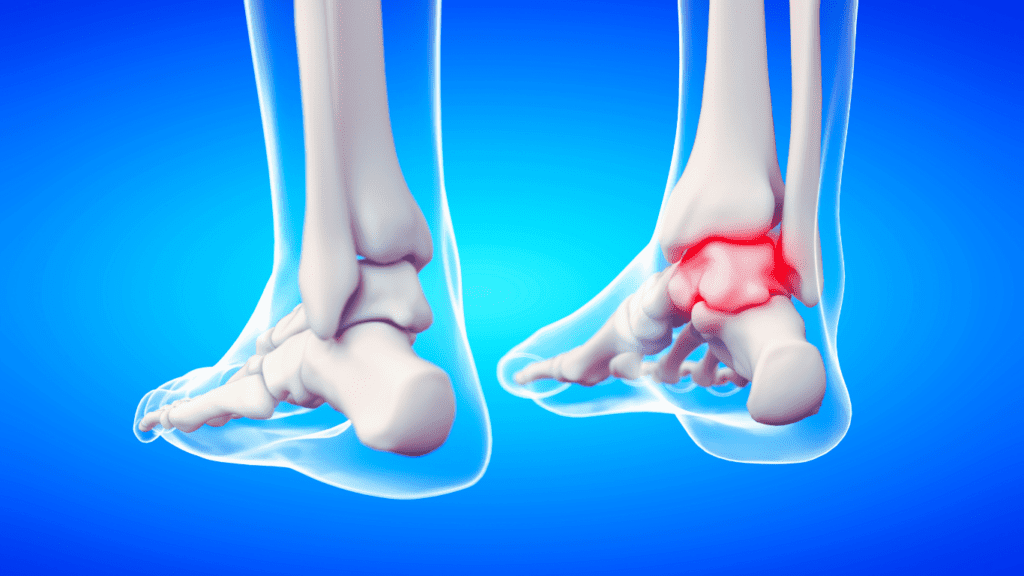
Importance of Ankle Mobility for Squats
So why is ankle mobility so crucial for squats? Well, if your ankles are stiff or restricted, your body compensates by shifting the movement elsewhere—usually your knees or lower back. This compensation can lead to several common problems with squat form:
- Forward leaning: If your ankles can’t move freely, your body will naturally lean forward to maintain balance, putting stress on your lower back.
- Heels lifting off the ground: Poor ankle mobility can cause your heels to rise, which reduces the power and stability of your squat.
- Knee instability: Limited mobility may force your knees to collapse inward or outward, increasing the risk of injury.
When you work on how to improve ankle mobility for squats, you address these issues by allowing your body to move more efficiently. With better ankle mobility, you’ll be able to maintain a more upright torso, keep your heels grounded, and stabilize your knees, which all contribute to a safer, stronger squat.
Why Ankle Mobility Matters for Squats Chart:
| Key Insight | Explanation | Impact on Squats |
|---|---|---|
| Importance of Dorsiflexion | Dorsiflexion is the motion of lifting the toes toward the shin, crucial for achieving a full squat depth. | Better dorsiflexion supports deeper, more stable squats. |
| Heel Lift During Squats | Limited ankle mobility often causes heels to rise off the ground during squats. | Leads to instability, decreased power, and forces compensations. |
| Forward Leaning | When ankles lack mobility, the body compensates by leaning forward to maintain balance. | Puts strain on the lower back and impacts squat form negatively. |
| Ankle Joint Anatomy | The ankle joint includes the tibia, fibula, and talus bones, stabilized by ligaments and powered by muscles. | Tightness or stiffness in any of these areas restricts ankle movement. |
| Knee Instability | Restricted ankle mobility can cause the knees to collapse inward or outward during squats. | Increased risk of knee injuries and decreased squat efficiency. |
The Science Behind Mobility
Let’s break down the relationship between ankle mobility and squat mechanics. The dorsiflexion of the ankle (the motion where your toes move toward your shin) is particularly important for squats. The deeper you go into a squat, the more your ankles need to dorsiflex. If your ankles can’t move into that position, other parts of your body try to make up for it, often leading to poor posture or pain.
When you learn how to improve ankle mobility for squats, you allow for greater range of motion, which makes it easier to maintain a proper squat position. Improved ankle mobility means you can:
- Get deeper into your squat: A greater range of motion in the ankles lets you lower your hips more effectively, leading to a deeper squat.
- Improve squat posture: Better ankle mobility helps you keep your torso more upright, preventing forward lean and unnecessary strain on your back.
- Distribute weight properly: With your ankles able to move freely, you’re more likely to keep your weight evenly distributed through your feet, enhancing balance and control.
The bottom line is, the more mobile your ankles are, the more natural and efficient your squat becomes. And while working on how to improve ankle mobility for squats takes time and consistency, the benefits are well worth the effort.
How to Improve Ankle Mobility for Squats: Simple Tests to Assess Your Mobility
Before diving into specific exercises to improve ankle mobility, it’s important to first understand where you stand in terms of flexibility. Knowing how mobile (or immobile) your ankles are can help you figure out the best strategies to work on. So, let’s look at a couple of simple techniques to assess your current ankle mobility and identify any limitations. If you want to know how to improve ankle mobility for squats, starting with a self-assessment is a great step in the right direction.
Self-Assessment Techniques
Knee-to-Wall Test
One of the easiest and most effective ways to check your ankle mobility is the Knee-to-Wall Test. It’s a quick test you can do anywhere, and it gives you a clear idea of how well your ankles move.

Here’s how to perform the test:
- Stand facing a wall with one foot about 4-5 inches away from it.
- Keeping your heel on the ground, try to touch your knee to the wall by bending your ankle forward.
- If your knee touches the wall easily without your heel lifting off the ground, you have good ankle mobility. If your heel lifts up or you can’t get your knee to the wall, that’s a sign of limited mobility.
- Repeat the test on the other leg to see if there’s any difference between your ankles.
The Knee-to-Wall Test helps you gauge how much dorsiflexion (forward bending) your ankle has, which is a key part of knowing how to improve ankle mobility for squats. Ideally, you want both ankles to have enough range of motion for smooth, controlled squats. If one or both ankles feel tight, you’ll know that mobility work is necessary.
Squat Test
Another effective way to assess ankle mobility is by doing a simple Squat Test. This will give you a sense of how your ankles are performing while under load and in motion—important factors for squatting.

Here’s how to perform the squat test:
- Stand with your feet shoulder-width apart and toes pointing slightly outward.
- Begin to squat down as deeply as you can, paying close attention to your ankle movement.
- Observe a few key things: Do your heels stay on the ground throughout the movement? Do your knees track properly over your toes? Is your body able to remain upright, or do you lean forward as you squat?
If your heels lift off the ground or you feel like your squat depth is restricted, these are common signs of poor ankle mobility. Knowing this helps when learning how to improve ankle mobility for squats because you can directly see how limited ankle movement is affecting your squat performance. The Squat Test shows in real-time what kind of compensation your body makes when ankle mobility is lacking, such as leaning forward or your knees collapsing inward.
Identifying Limitations
Once you’ve completed the Knee-to-Wall Test and Squat Test, you can start identifying specific limitations in your ankle mobility. If you struggle with these tests, it’s an indication that you need to work on improving your range of motion. Here are some common signs that you might have poor ankle mobility:
- Heels lifting off the ground during squats: This is often the first sign that your ankles are too tight. It causes instability and forces your body to compensate, which can throw off your entire squat form.
- Inability to squat deeply: If you find it hard to get low in your squat without your form breaking down, limited ankle mobility could be the culprit.
- Excessive forward leaning: A lack of ankle dorsiflexion often causes your torso to lean forward to balance out the movement, which increases the risk of lower back strain.
- Knee instability: Poor ankle mobility can lead to the knees collapsing inward or outward, increasing your risk of injury.
The good news is, once you’ve pinpointed these limitations, you’re on your way to figuring out how to improve ankle mobility for squats. Now that you’ve done your assessment, you can start focusing on exercises and stretches that specifically target the areas holding you back.
Assessing your ankle mobility with simple tests like the Knee-to-Wall Test and Squat Test is a crucial first step in understanding how your ankles affect your squat performance. These tests highlight the limitations that could be preventing you from squatting deeply or with proper form. Whether it’s heels lifting, forward leaning, or knee instability, addressing poor mobility is key to unlocking better squat mechanics. Once you know where you stand, it’s much easier to work on how to improve ankle mobility for squats and make real progress in your fitness journey. Stay tuned for the next section, where we’ll explore the most effective exercises and stretches to fix these mobility issues!
How to Improve Ankle Mobility for Squats: Effective Exercises and Drills
Now that you’ve assessed your ankle mobility and identified areas that may need work, it’s time to roll up your sleeves and dive into some practical exercises. Learning how to improve ankle mobility for squats involves a combination of dynamic warm-ups, stretching, strengthening, and mobility drills. These exercises will help you enhance your ankle flexibility, improve your squat form, and ultimately elevate your overall fitness performance. Let’s break down these exercises step by step.
Dynamic Warm-Up Routine
A proper warm-up is essential for preparing your body for exercise and preventing injuries. The following dynamic warm-up routine is designed to loosen up your ankle joints and improve mobility.
Ankle Circles
Ankle Circles are a great way to warm up the ankle joint and improve flexibility. Here’s how to perform this exercise:
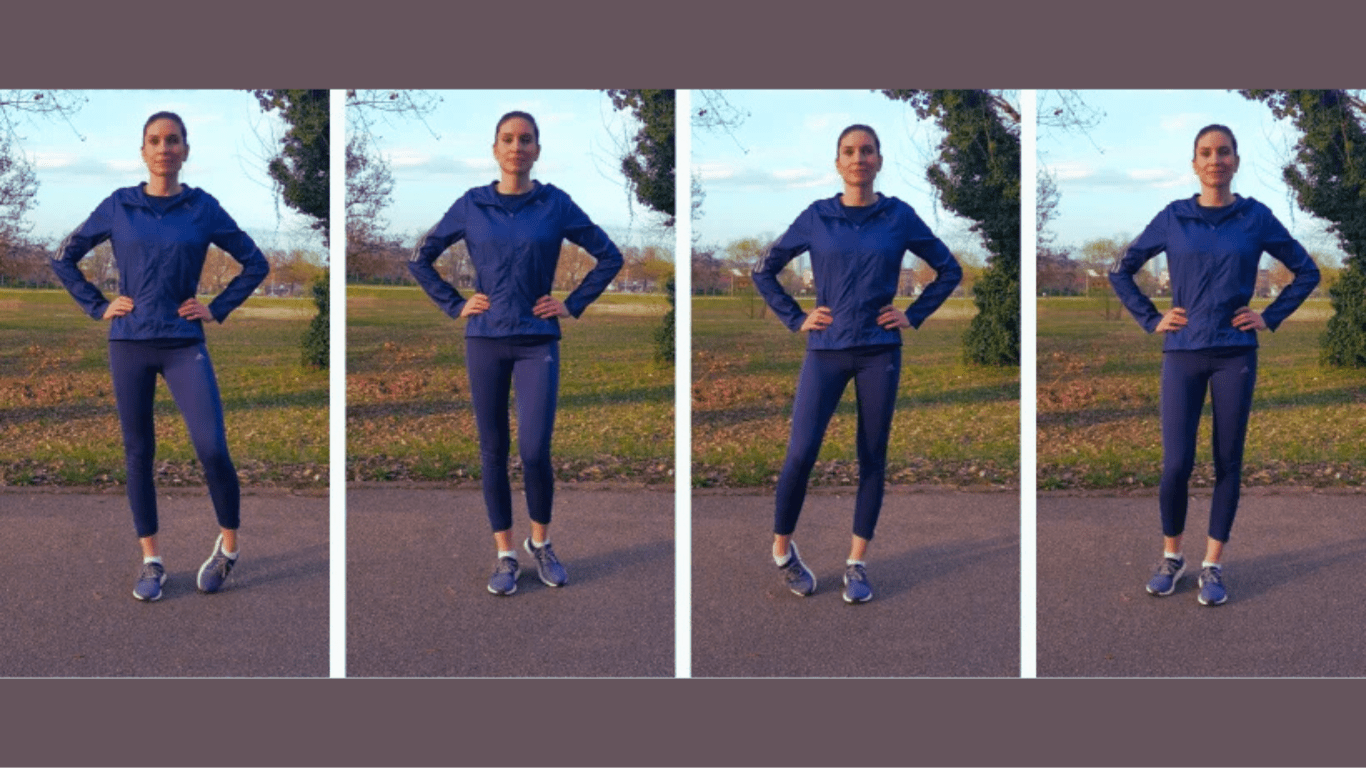
- Stand on One Leg: Find a sturdy surface for balance if needed, and lift one foot off the ground.
- Circle Your Ankle: With your foot lifted, begin making circles with your ankle, moving in a clockwise direction for about 10-15 seconds.
- Reverse the Direction: After completing the circles in one direction, switch to counterclockwise for another 10-15 seconds.
- Switch Legs: Repeat the exercise on your other leg.
Benefits: Ankle Circles help to increase blood flow and loosen the joint, making it easier to perform other exercises.
Walking Lunges with a Twist
Next up is the Walking Lunges with a Twist, which is excellent for warming up the entire lower body while also engaging your core.
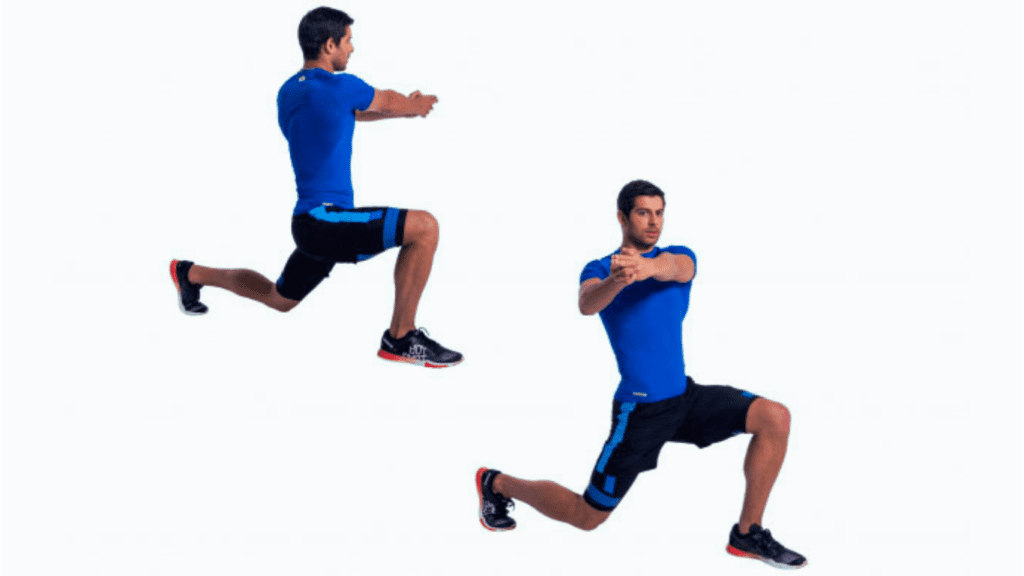
- Start Standing: Begin by standing tall with your feet hip-width apart.
- Step Forward: Take a big step forward with your right foot, lowering your hips until both knees are bent at about a 90-degree angle.
- Twist Your Torso: As you lunge, twist your torso towards your right knee. This adds a rotational movement, which enhances flexibility.
- Return and Repeat: Push through your front heel to return to standing, then switch legs and repeat. Aim for 10-12 lunges on each side.
Benefits: This exercise warms up your hips, knees, and ankles while improving your overall coordination and balance.
Stretching Exercises
Stretching is vital for improving flexibility and mobility. Here are some effective stretches specifically for your ankles.
Calf Stretch (Wall or Step Stretch)
The Calf Stretch is crucial for targeting the gastrocnemius and soleus muscles, which directly influence ankle mobility.
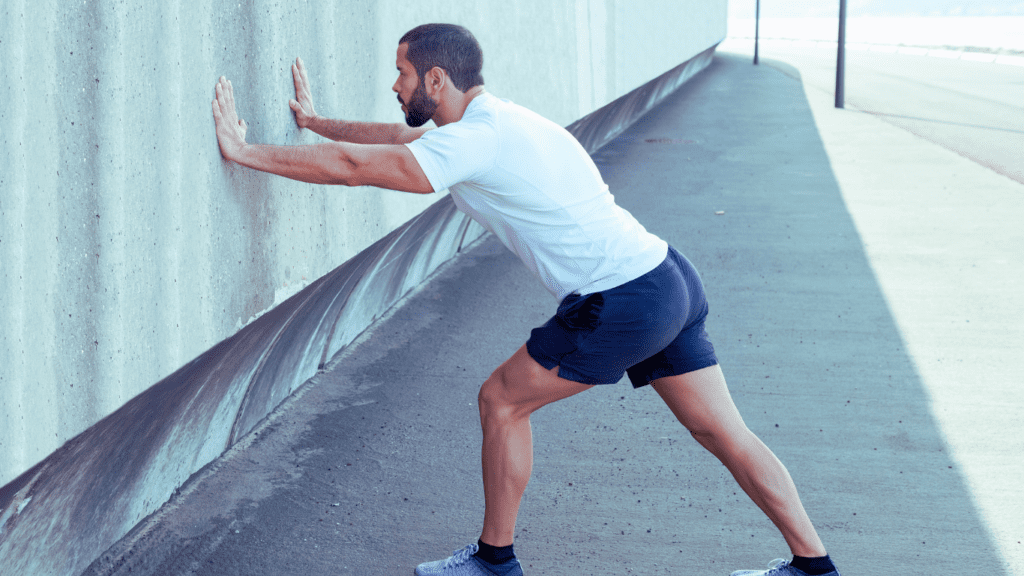
- Wall Stretch: Stand facing a wall, about an arm’s length away. Place your hands on the wall for support.
- Step Back: Step back with one foot, keeping that heel on the ground while bending your front knee.
- Lean In: Lean into the wall until you feel a stretch in the calf of the back leg. Hold for 20-30 seconds.
- Switch Legs: Repeat on the opposite side.
Duration: Perform this stretch for 2-3 sets on each leg.
Soleus Stretch
The Soleus Stretch targets the deeper calf muscle, which is crucial for ankle dorsiflexion.

- Start in a Lunge Position: Get into a lunge position, but keep your back knee bent and on the ground.
- Press Forward: Lean forward into your front knee while keeping your heel down. You should feel a stretch lower in the calf.
- Hold: Maintain this position for 20-30 seconds before switching sides.
Importance: This stretch is particularly beneficial for improving the range of motion in the ankle, essential for effective squatting.
Band Stretch
Using a resistance band can be a powerful way to improve ankle mobility.
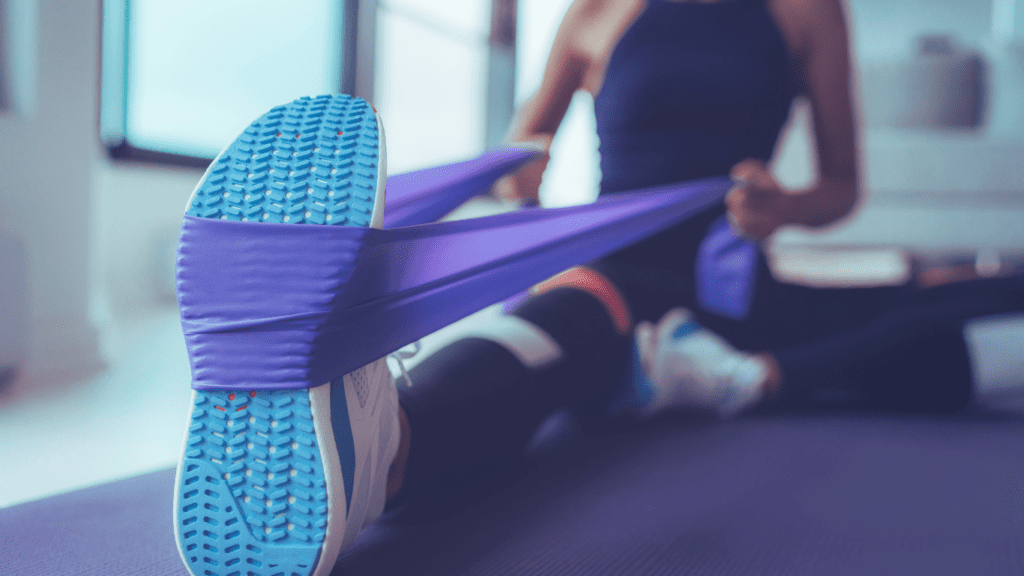
- Set Up the Band: Loop a resistance band around the front of your ankle and anchor the other end to a sturdy object.
- Dorsiflex: Step back so there’s tension in the band. Gently push your knee forward while keeping your heel on the ground.
- Hold: Maintain this position for 20-30 seconds, feeling the stretch in your calf and ankle.
Benefits: The band provides continuous tension, enhancing your ability to stretch effectively.
Strengthening Exercises
Strengthening the muscles around the ankle is just as important as stretching. Here are a couple of exercises to consider:
Heel Raises
Heel Raises are an excellent way to strengthen the calf muscles and improve ankle stability.
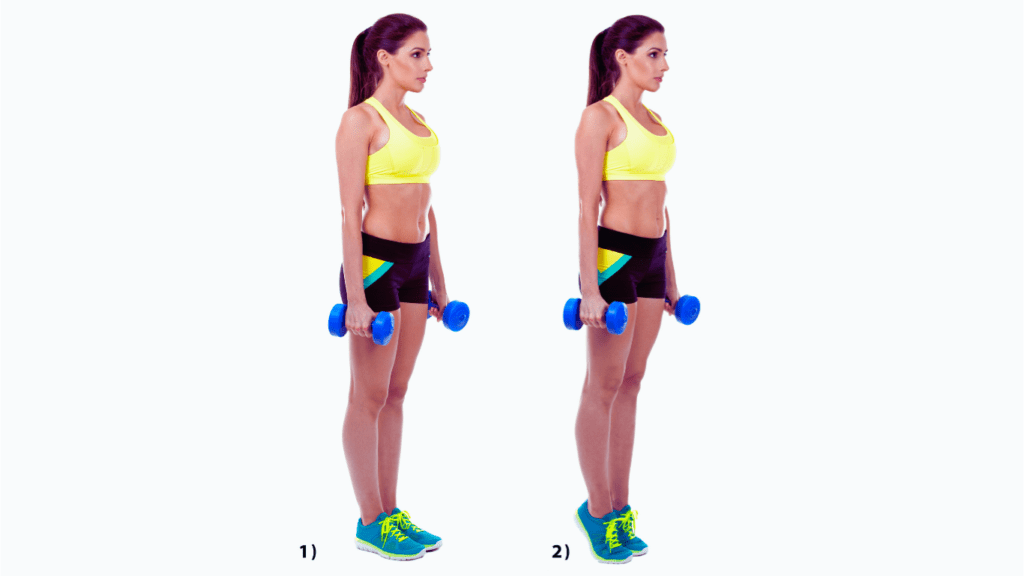
- Stand Tall: Begin standing on both feet, ideally on a step or an elevated surface.
- Rise Up: Slowly raise your heels off the ground, balancing on your toes.
- Lower Down: Slowly lower your heels back down to the starting position.
Variations:
- Single-Leg Heel Raises: For added challenge, perform this exercise on one leg.
- Weighted Heel Raises: Hold a dumbbell or kettlebell in one hand for extra resistance.
Benefits: This exercise not only builds strength but also enhances stability, which is essential for squatting.
Toe Walking
Toe Walking is a simple yet effective exercise for building strength and improving ankle mobility.

- Walk on Your Toes: Simply walk around on your toes for 30 seconds to 1 minute.
- Focus on Balance: Try to maintain your balance while walking, engaging your calf muscles.
Benefits: This exercise helps strengthen the muscles responsible for maintaining balance and stability in the ankle.
Mobility Drills
In addition to strengthening and stretching, mobility drills are essential for improving overall ankle flexibility.
Goblet Squat
The Goblet Squat is a fantastic exercise that not only enhances squat mechanics but also focuses on ankle mobility.
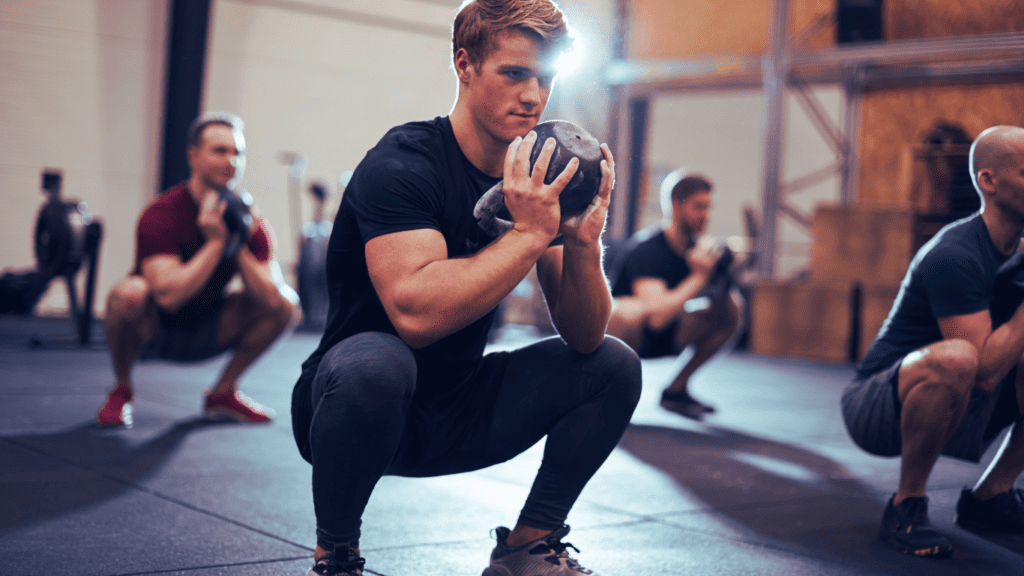
- Hold a Weight: Begin by holding a dumbbell or kettlebell close to your chest.
- Squat Down: With your feet shoulder-width apart, squat down as low as you can, ensuring your heels stay on the ground.
- Focus on Form: Keep your chest up and knees aligned with your toes. Hold the squat position for a few seconds before rising back up.
Benefits: This exercise promotes proper squat mechanics and allows you to actively work on ankle mobility as you squat deeper.
Deep Squat Holds
Deep Squat Holds are another effective way to enhance flexibility and mobility in the ankles.
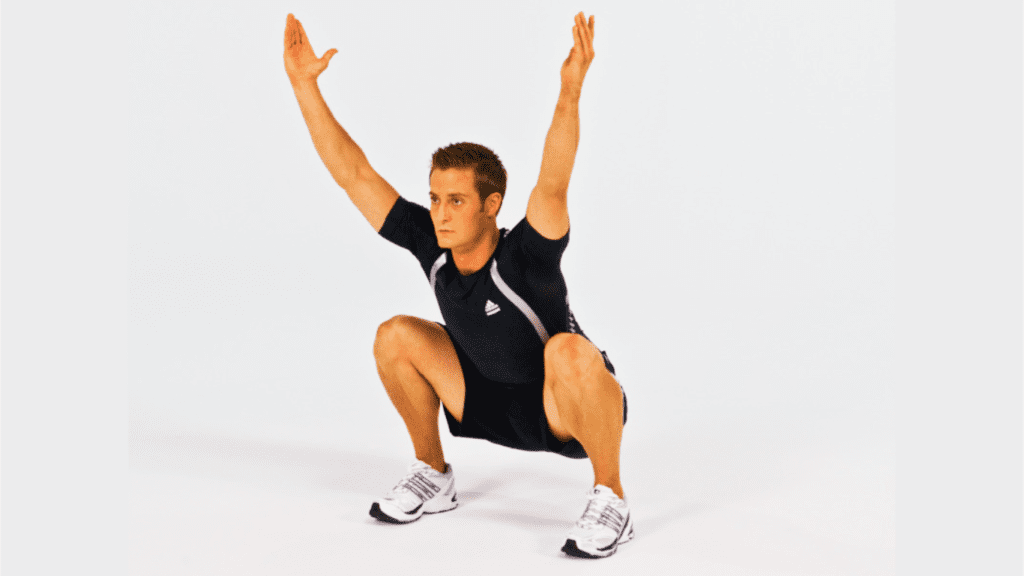
- Get into a Deep Squat: Stand with your feet shoulder-width apart and squat down as low as you can go.
- Hold the Position: Aim to hold this position for 20-30 seconds, keeping your chest up and knees out.
- Breathe: Focus on deep breathing while in the squat to help relax the muscles.
Benefits: Holding this position encourages the ankles to adapt to deeper ranges of motion, which is essential for effective squatting.
Ankle Mobility Exercises for Squats: Summary and Benefits Chart:
| Exercise Type | Exercise Name | Primary Goal | Benefits |
|---|---|---|---|
| Dynamic Warm-Up | Ankle Circles | Increase blood flow to ankles | Loosens ankle joint, primes mobility for deeper squat positions |
| Walking Lunges with Twist | Full-body warm-up, core engagement | Warms up hips, knees, and ankles while enhancing balance and coordination | |
| Stretching | Calf Stretch | Stretch gastrocnemius and soleus | Increases ankle flexibility, essential for improved dorsiflexion in squats |
| Soleus Stretch | Target deeper calf muscles | Enhances lower calf flexibility, crucial for deep squats and smooth ankle movement | |
| Band Stretch | Add tension for effective stretch | Provides continuous resistance to deepen stretch and improve ankle dorsiflexion | |
| Strengthening | Heel Raises | Strengthen calf muscles | Builds stability in ankles, improves squat support and reduces injury risk |
| Toe Walking | Boost balance and ankle strength | Strengthens muscles responsible for ankle balance and stability | |
| Mobility Drills | Goblet Squat | Enhance squat form, focus on depth | Improves ankle mobility while promoting proper squat mechanics |
| Deep Squat Holds | Encourage deeper ankle flexibility | Increases ankle range of motion in squats, helps adapt to deeper squat positions |
Incorporating these practical exercises into your routine is a powerful way to learn how to improve ankle mobility for squats. By combining dynamic warm-ups, stretching, strengthening, and mobility drills, you can significantly enhance your ankle flexibility and overall squat performance. Remember to start slowly, listen to your body, and be consistent in your practice. Over time, you’ll notice improvements in your ankle mobility, allowing you to squat deeper, lift heavier, and perform better in all your fitness endeavors. Keep pushing forward, and soon you’ll be reaping the benefits of improved ankle mobility in your squats!
Incorporating Ankle Mobility Work into Your Routine
When you’re on a mission to improve your squat game, one crucial aspect to consider is how to improve ankle mobility for squats. Consistently incorporating ankle mobility exercises into your routine can significantly impact your performance and overall fitness. In this section, we will explore the best practices for frequency and duration of these exercises, the importance of including them in your warm-ups and cool-downs, and how to create a balanced routine that enhances both your ankle mobility and strength.

How to Improve Ankle Mobility for Squats: Frequency and Duration
To effectively enhance your ankle mobility, consistency is key. How to improve ankle mobility for squats requires a regular commitment to the exercises. Aiming to perform these exercises 3-5 times a week is ideal for most individuals. Here’s a breakdown of how often you should work on your ankle mobility:
- 3 Times a Week: For beginners or those just starting out, performing ankle mobility exercises three times a week is sufficient. This frequency allows your body time to adapt while preventing overtraining. Each session should last around 15-20 minutes, which is manageable and effective.
- 4-5 Times a Week: As you become more accustomed to the exercises, increasing the frequency to four or five times a week can lead to more significant improvements. These sessions can be around 20-30 minutes long. During this time, you can include dynamic warm-ups, stretching, and mobility drills to enhance your overall range of motion.
Warm-Up/Cool-Down Recommendations
Including ankle mobility work in your warm-ups and cool-downs is crucial for getting the most out of your workouts. Here’s why:
Warm-Up Importance
A proper warm-up prepares your body for the workout ahead, and how to improve ankle mobility for squats begins here. When you warm up your ankles, you:
- Enhance Blood Flow: Increased circulation to the muscles around the ankle joint helps improve flexibility and prepares your body for intense movements.
- Reduce Injury Risk: Ankle mobility exercises in your warm-up can help prevent injuries by ensuring your joints are adequately prepared for the physical demands of squats and other exercises.
- Improve Performance: Engaging in mobility work before you lift allows you to maintain proper form during squats, facilitating deeper movements and better overall performance.
To incorporate ankle mobility into your warm-up, consider performing dynamic movements like ankle circles, walking lunges with a twist, and gentle calf stretches for about 5-10 minutes.
Cool-Down Importance
Cooling down after your workout is equally essential. Including ankle mobility exercises in your cool-down can:
- Promote Recovery: Stretching and mobility work helps clear lactic acid and other metabolic waste products from your muscles, reducing soreness and stiffness.
- Enhance Flexibility: After a workout, your muscles are warm and more pliable, making it an ideal time to work on flexibility. Focusing on your ankle mobility during this period can maintain and even improve your range of motion.
To incorporate ankle mobility into your cool-down, dedicate about 5-10 minutes to stretches such as the calf stretch, soleus stretch, and band stretches.
Creating a Balanced Routine
To effectively improve your ankle mobility while ensuring a well-rounded fitness regimen, it’s essential to integrate these exercises with your strength training and conditioning workouts. Here are some tips on how to do this:
- Combine Mobility with Strength Training: On days when you focus on lower body strength, always include ankle mobility work as part of your warm-up. This will help ensure that your ankles are prepared for squats and lunges. Additionally, consider doing a few mobility exercises right after your strength training to maintain flexibility.
- Incorporate Mobility Drills in Conditioning Workouts: If you participate in high-intensity workouts or circuits, integrate short ankle mobility drills between exercises. For example, after a round of burpees, you could do a quick set of heel raises or deep squat holds to keep your ankles flexible.
- Active Recovery Days: On days focused on active recovery, dedicate a session primarily to ankle mobility exercises. This could involve a longer period of stretching, foam rolling, and light mobility drills to promote recovery while keeping your ankles functional.
Incorporating ankle mobility work into your routine is not just beneficial; it is essential for anyone looking to enhance their squat performance and overall fitness. Understanding how to improve ankle mobility for squats is vital, and by following these guidelines on frequency, warm-up and cool-down strategies, and balancing your routine, you’ll set yourself up for success. Remember, consistency is key, and integrating these practices will lead to better mobility, improved performance, and a reduced risk of injury. So lace up those sneakers, roll out your mat, and get ready to take your ankle mobility—and your squats—to the next level!
Common Challenges and Solutions: How to Improve Ankle Mobility for Squats
When focusing on how to improve ankle mobility for squats, you might encounter some common challenges along the way. Whether you’re a seasoned athlete or just starting out, knowing how to troubleshoot these issues can make your journey smoother and more effective. In this section, we’ll discuss recognizing discomfort, adapting exercises for different fitness levels, and determining when to seek professional help.

How to Improve Ankle Mobility for Squats: Overcoming Pain or Discomfort
Understanding how to improve ankle mobility for squats also means recognizing what is normal and what is not when it comes to discomfort.
- Normal Discomfort: It’s common to feel mild discomfort during stretching or mobility exercises, especially if you’re working on increasing your range of motion. This sensation may feel like tightness or slight pulling in the muscles and ligaments around your ankles. If this discomfort eases as you continue with the movement, it’s typically a sign that your muscles are adapting.
- When to Be Concerned: However, if you experience sharp pain or significant discomfort that persists even after you stop the activity, it may indicate an underlying issue. Signs of a problem include:
- Swelling around the ankle
- Limited range of motion that doesn’t improve with stretching
- Pain that radiates beyond the ankle joint
If you notice any of these symptoms, it’s crucial to listen to your body. Continuing to push through pain may lead to injuries, further complicating your efforts in how to improve ankle mobility for squats.
Adapting Exercises for Different Fitness Levels
Not everyone starts at the same fitness level, and when exploring how to improve ankle mobility for squats, it’s essential to modify exercises to suit your needs. Here are some helpful adaptations for those just starting out or those with limited mobility:
- Use Support: If you’re struggling with balance during mobility exercises, don’t hesitate to use a wall or sturdy piece of furniture for support. This can help you focus on the movement without worrying about falling over.
- Start Slow: If you find it challenging to perform certain exercises, begin with gentler variations. For instance, if a full squat feels too difficult, try a box squat. This involves sitting back onto a box or bench to lower yourself, which can help maintain good form without overextending your ankles.
- Reduce Range of Motion: If traditional stretches are too intense, limit the range of motion. For example, while performing a calf stretch, instead of leaning into the stretch as far as possible, take a step back and focus on feeling the stretch at a level that feels comfortable for you.
- Incorporate Non-Weight Bearing Exercises: If you’re dealing with significant mobility restrictions, consider exercises that don’t put weight on your ankles, such as seated calf raises or ankle circles performed while seated. This can help you work on mobility without overexerting yourself.
When to Seek Professional Help
Sometimes, the best way to address challenges in how to improve ankle mobility for squats is to consult a professional. Here are a few situations where seeking help might be necessary:
- Persistent Pain: If you’ve been experiencing pain that doesn’t improve with rest or modifications, it may be time to consult a physical therapist. They can assess your situation, provide personalized advice, and recommend specific exercises tailored to your needs.
- Injury History: If you have a history of ankle injuries or chronic pain conditions, getting a professional evaluation is wise. A therapist or trainer can help you develop a safe approach to improving your mobility without risking further injury.
- Limited Progress: If you’ve been diligently working on how to improve ankle mobility for squats but aren’t seeing any progress after several weeks, a professional can help identify potential underlying issues or correct any misalignments in your technique.
- Training for a Specific Goal: If you’re preparing for a specific event or competition, working with a trainer can provide you with a structured plan that addresses your unique needs, ensuring you’re adequately prepared.
Addressing challenges while learning how to improve ankle mobility for squats is an essential part of your fitness journey. By recognizing normal discomfort versus pain, adapting exercises for different fitness levels, and knowing when to seek professional help, you can navigate these common problems with confidence. Remember, everyone’s journey is different, and it’s perfectly okay to ask for assistance when needed. With patience and persistence, you’ll continue to make strides in your ankle mobility, leading to better squats and overall performance.
Final Thoughts: How to Improve Ankle Mobility for Squats
As we wrap up our exploration of how to improve ankle mobility for squats, it’s essential to revisit why ankle mobility is such a vital component of your fitness journey. Improved ankle mobility not only enhances your squat performance but also contributes to better overall fitness. Throughout this article, we’ve covered various aspects of ankle mobility, from understanding its significance to practical exercises and troubleshooting common challenges. Let’s summarize these key points and emphasize the importance of incorporating ankle mobility work into your routine for long-term benefits.

The Benefits of Improved Ankle Mobility
Enhanced ankle mobility can lead to several improvements in your fitness, particularly when it comes to squats. Here are some of the ways that increased ankle flexibility can benefit you:
- Deeper Squats: Improved ankle mobility allows you to achieve a deeper squat position. This means you can fully engage your quadriceps, hamstrings, and glutes, leading to better muscle activation and overall strength development.
- Better Posture: With greater ankle mobility, your body can maintain a more upright position during squats. This helps prevent forward leaning, which can lead to poor form and potential injuries.
- Injury Prevention: By enhancing your ankle mobility, you reduce the risk of injuries caused by compensatory movements. This is particularly important in preventing knee and lower back injuries often associated with improper squat mechanics.
- Increased Athletic Performance: Ankle mobility is crucial for various athletic movements, not just squats. Improved mobility can enhance your performance in sports that require jumping, running, or changing directions quickly.
How to Improve Ankle Mobility for Squats: Summarizing Key Points
Throughout this article, we discussed several essential components of how to improve ankle mobility for squats:
- Understanding Ankle Mobility: We defined ankle mobility and explored the anatomy involved, helping you grasp its importance in fitness and squats.
- Assessing Your Ankle Mobility: Self-assessment techniques, such as the knee-to-wall test and squat test, provided you with tools to identify your current ankle mobility level.
- Practical Exercises: We introduced dynamic warm-ups, stretching exercises, and mobility drills tailored to enhance your ankle flexibility.
- Incorporating Mobility Work: We discussed the frequency and duration of your mobility routine and emphasized the importance of including ankle work in your warm-ups and cool-downs.
- Troubleshooting Challenges: Recognizing normal discomfort, adapting exercises, and knowing when to seek professional help were vital aspects of navigating common issues related to ankle mobility.
Motivating Long-Term Commitment
As you embark on your journey of how to improve ankle mobility for squats, remember that consistency is key. Developing a routine around ankle mobility exercises can lead to significant long-term benefits, not just for squats but for your overall fitness. Stick with your routine, be patient with your progress, and celebrate the small victories along the way.
We encourage you to share your experiences, challenges, or any questions you have about ankle mobility in the comments section. Your journey can inspire others, and together, we can create a supportive community focused on improving fitness and well-being.
FAQ Section: How to Improve Ankle Mobility for Squats
1. How often should I perform ankle mobility exercises?
Aim for 3-5 times a week, dedicating 15-30 minutes each session to see improvements.
2. What are some signs of poor ankle mobility?
Common signs include heels lifting, inability to squat deeply, and knee instability.
3. Can ankle mobility exercises help with knee pain?
Yes, improving ankle mobility can help alleviate knee pain by promoting proper movement mechanics and reducing compensatory stress.
4. How do I know if I’m doing the exercises correctly?
Focus on maintaining good form, feeling the stretch or movement without pain, and consulting instructional videos or professionals for guidance.
5. Are there any specific stretches for ankle mobility?
Yes, some effective stretches include the calf stretch, soleus stretch, and band stretch.
6. Can I do ankle mobility work on days I’m not training?
Absolutely! Ankle mobility exercises can be part of your active recovery days to enhance flexibility and promote recovery.
7. Should I feel pain during ankle mobility exercises?
Mild discomfort is normal, but sharp or persistent pain indicates you should stop and consult a professional.
8. What can I do if I have limited ankle mobility?
Start with gentle stretches, use supports, and modify exercises to your comfort level while gradually increasing intensity.
9. How does ankle mobility affect my overall athletic performance?
Greater ankle mobility allows for improved movement mechanics, leading to better performance in various sports and physical activities.
10. When should I seek professional help for ankle mobility issues?
If you experience persistent pain, have a history of injuries, or don’t see progress after consistent effort, consider consulting a physical therapist or trainer.
In conclusion, focusing on how to improve ankle mobility for squats is a journey worth embarking on. By understanding its importance, implementing practical exercises, and troubleshooting common issues, you’ll be well on your way to enhancing your squatting ability and overall fitness. Remember, consistency and commitment to your ankle mobility routine will yield long-term results, so stay dedicated and keep pushing toward your fitness goals!


